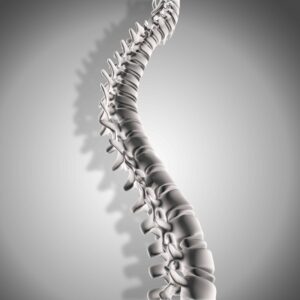Son güncelleme 2 September 2025 by ömer bozdurman
A spinal fracture is a serious medical condition characterized by a break or crack in one or more of the vertebrae, the bones that form the spine. The spine, a critical structure that supports the body and protects the spinal cord, is divided into regions: cervical (neck), thoracic (upper back), lumbar (lower back), sacral, and coccygeal (tailbone). When a spinal fracture occurs, it can range from a mild spinal compression fracture to severe fracture-dislocations, potentially leading to complications like chronic pain, neurological deficits, or paralysis. Understanding spinal fracture symptoms, causes, types, and treatment options is essential for timely intervention and recovery. This comprehensive guide explores spinal fractures, their diagnosis, spinal fracture treatment, and prevention strategies, optimized for those seeking detailed information.

What is a Spinal Fracture?
A spinal fracture occurs when one or more vertebrae in the spine break due to trauma, disease, or structural weakness. These fractures can affect any part of the spine, with the thoracic and lumbar regions being the most commonly impacted due to their load-bearing roles. Unlike other bone fractures, spinal fractures are particularly concerning because they are close to the spinal cord and nerve roots, which control movement, sensation, and bodily functions. A spinal compression fracture, for example, is often linked to osteoporosis, while more severe spinal fracture types like burst fractures typically result from high-impact trauma.
The severity of a spinal fracture depends on its location, type, and whether it affects the spinal cord. For instance, a spinal compression fracture from a fall in an elderly individual may cause localized pain, while a fracture-dislocation from a car accident could lead to spinal cord injury and paralysis. In Türkiye, cities like Samsun offer advanced healthcare facilities with specialized teams to diagnose and treat spinal fractures, ensuring patients receive prompt and effective care.
How Spinal Fractures Differ from Other Bone Injuries
Spinal fractures are distinct from fractures in other bones, such as those in the arms or legs, due to their proximity to the spinal cord and nerves. While a broken arm typically causes localized pain and limited mobility, a spinal fracture can lead to severe complications, including paralysis, loss of sensation, or loss of bladder and bowel control. Additionally, spinal fractures can result from a wider range of causes, including trauma, osteoporosis, cancer, or infections, making their diagnosis and spinal fracture treatment more complex. For example, a spinal stress fracture caused by repetitive strain may develop gradually, while a spinal compression fracture from a fall can occur suddenly.
In Samsun, orthopedic and neurosurgery specialists use advanced diagnostic tools to assess spinal fractures and investigate underlying conditions like osteoporosis or metastatic cancer, ensuring a tailored spinal fracture treatment plan.
Common Causes of Spinal Fractures
Spinal fracture causes are diverse, ranging from high-impact trauma to chronic conditions that weaken the bones. Understanding these causes is crucial for prevention and early intervention.
Traumatic Injuries (Car Accidents, Falls, Sports)
Traumatic injuries are a leading cause of spinal fractures, with falls accounting for approximately 59% of cases and car accidents contributing to 21% [1]. Common scenarios include:
- Car accidents: High-impact collisions can cause severe spinal fractures, such as burst fractures or fracture-dislocations, particularly in the thoracolumbar region (where the upper and lower back meet) [2]. For example, a sudden impact during a car accident can shatter a vertebra, potentially compressing the spinal cord. Samsun’s emergency departments are well-equipped to handle such spinal fracture causes with rapid response teams.
- Falls: Falls are a primary cause of spinal compression fractures, especially in older adults with weakened bones. A spinal compression fracture from a fall can occur from something as simple as slipping on a wet floor or falling down stairs [3]. These fractures are common in individuals over 50 and require prompt evaluation.
- Sports injuries: High-risk activities like soccer, gymnastics, or skiing can lead to spinal fractures, including cervical fractures or spinal stress fractures, particularly in younger individuals [4]. For instance, falling backward while skiing can cause a spinal fracture in the lumbar region.
Traumatic spinal fractures often require urgent spinal fracture treatment, and hospitals in Samsun, such as VM Medical Park, provide specialized care for these cases.
Osteoporosis and Bone Weakness
Osteoporosis, a condition that reduces bone density, is a major cause of spinal compression fractures, affecting about 25% of postmenopausal women [5]. Weakened vertebrae can collapse under minor stress, such as coughing, lifting, or even bending over. Risk factors for osteoporosis-related spinal fractures include low body mass index, smoking, long-term steroid use, and a history of fractures [6]. Conditions like ankylosing spondylitis, which stiffens the spine, also increase the risk of spinal fractures even with low-impact injuries [7].
In Samsun, physical therapy and rehabilitation centers offer osteoporosis screening programs, including DEXA scans, to monitor bone density and prevent spinal compression fractures. These programs often include bone-strengthening treatments and lifestyle recommendations.
Tumors or Cancer-Related Bone Damage
Cancers that metastasize to the spine, such as breast, prostate, or lung cancer, or primary bone cancers like multiple myeloma, can weaken vertebrae, leading to pathological spinal fractures [8]. These fractures may cause severe complications, such as spinal cord compression, which can result in neurological deficits. Regular screenings are critical for early detection, especially in patients with a history of cancer.
Samsun’s oncology centers employ a multidisciplinary approach, using advanced diagnostics like MRI and biopsies to identify and treat cancer-related spinal fractures, ensuring timely spinal fracture treatment.
Types of Spinal Fractures
Spinal fracture types are classified based on the mechanism of injury, using the AO Spine classification system, which divides them into Type A (compression), Type B (tension band), and Type C (displacement) fractures [9]. Below are the primary spinal fracture types:
Compression Fractures
Spinal compression fractures occur when the front part of a vertebra collapses, often due to osteoporosis. These fractures are common in the thoracic or lumbar regions and can cause a wedge-shaped deformity [10]. For example, a 70-year-old individual experiencing back pain after a minor fall may have a spinal compression fracture from a fall. Multiple spinal compression fractures can lead to kyphosis, a hunchback deformity that affects posture and mobility. These fractures are typically stable but require effective spinal compression fracture treatment to manage pain and prevent further damage.
Burst Fractures
Burst fractures result from high-impact trauma, such as car accidents or falls from a height, causing the vertebra to shatter in multiple directions. Bone fragments may enter the spinal canal, increasing the risk of neurological damage [11]. These unstable fractures often necessitate spinal fracture surgery to stabilize the spine and protect the spinal cord. Samsun’s neurosurgery clinics are equipped with advanced techniques to address burst fractures.
Flexion-Distraction Fractures
Also known as Chance fractures, flexion-distraction fractures occur when the spine is excessively bent forward, often in car accidents where a seatbelt holds the lower body while the upper body lurches forward [12]. These fractures affect all parts of the spine (anterior, middle, and posterior columns) and are unstable, typically requiring spinal fracture surgery to restore stability.
Fracture-Dislocations
Fracture-dislocations involve both a fracture and a displacement of the vertebrae, often resulting from severe trauma like industrial accidents or high-speed collisions. These injuries are highly unstable and carry a significant risk of spinal cord damage, necessitating emergency spinal fracture surgery to preserve neurological function [13].
Symptoms of a Spinal Fracture
Spinal fracture symptoms vary depending on the fracture’s location, severity, and whether the spinal cord or nerves are affected. Recognizing these symptoms is critical for seeking timely spinal fracture treatment.
Pain and Tenderness in the Back or Neck
Sudden back or neck pain that worsens with movement is the most common symptom of a spinal fracture [14]. In cases of spinal compression fractures, pain may develop gradually, especially in osteoporosis patients. For example, back pain after a fall could indicate a spinal compression fracture from a fall. This pain is often localized and accompanied by tenderness in the affected area.
Numbness, Weakness, or Tingling in the Limbs
If the spinal cord or nerve roots are compressed, patients may experience numbness, weakness, or tingling in the arms or legs [15]. For instance, tingling in the arms may suggest a cervical fracture, while leg symptoms may indicate a lumbar or thoracic injury. These neurological spinal fracture symptoms require urgent medical evaluation.
Loss of Bladder or Bowel Control
Severe spinal cord damage can lead to loss of bladder or bowel control, potentially indicating cauda equina syndrome, a medical emergency requiring immediate spinal fracture surgery [16]. This symptom is rare but critical, as delayed treatment can result in permanent neurological damage. Samsun’s neurosurgery specialists provide 24/7 care for such emergencies.
Other spinal fracture symptoms include height loss, kyphosis, and reduced quality of life, particularly in older adults with multiple spinal compression fractures [17].
Diagnosis of Spinal Fractures
Accurate diagnosis is the cornerstone of effective spinal fracture treatment. Diagnostic methods include:
Physical Examination and Neurological Assessment
A doctor will assess pain, tenderness, and spinal alignment during a physical exam. A neurological assessment evaluates reflexes, muscle strength, and sensory loss to determine if the spinal cord or nerves are affected [18]. Back pain after a fall in patients over 50 is considered a red flag, prompting further investigation [19].
Imaging Tests (X-ray, CT Scan, MRI)
- X-ray: Quickly identifies spinal fractures and alignment issues.
- CT scan: Provides detailed images of bone structure, ideal for diagnosing burst fractures.
- MRI: Assesses damage to the spinal cord, ligaments, and discs, crucial for evaluating neurological risks [20].
Samsun’s advanced imaging centers, available at hospitals like Ondokuz Mayıs University Medical Faculty Hospital, ensure rapid and accurate diagnosis of spinal fractures.
Treatment Options for Spinal Fractures
Spinal fracture treatment depends on the fracture’s type, severity, and the patient’s overall health. Options range from conservative measures to surgical interventions.
Non-Surgical Treatments (Bracing, Rest, Medications)
Many spinal compression fractures can be managed without surgery:
- Bracing: A brace stabilizes the spine, reduces pain, and supports healing [21]. For example, a patient with a spinal compression fracture may wear a thoracic brace for several weeks.
- Rest: Short-term rest promotes bone healing, but prolonged bed rest is avoided to prevent muscle atrophy and other complications.
- Medications: Pain relievers (e.g., acetaminophen, ibuprofen), anti-inflammatory drugs, or muscle relaxants are commonly prescribed. For osteoporosis patients, drugs like teriparatide can reduce pain and support bone healing [22].
Samsun’s physical therapy clinics specialize in spinal compression fracture treatment, offering personalized rehabilitation programs to restore mobility and strength.
Surgical Treatments (Spinal Fusion, Vertebroplasty, Kyphoplasty)
Severe or unstable spinal fractures, such as burst fractures or fracture-dislocations, may require spinal fracture surgery:
- Spinal fusion: Metal plates, screws, or rods are used to join vertebrae, stabilizing the spine. This is common for burst fractures or fracture-dislocations [23].
- Vertebroplasty: Bone cement is injected into the fractured vertebra to stabilize it, often used for spinal compression fractures caused by osteoporosis.
- Kyphoplasty: A balloon is inserted to restore vertebral height before cement injection, reducing the risk of kyphosis [24]. This procedure is particularly effective for spinal compression fracture treatment in older adults.
Hospitals in Samsun, such as VM Medical Park, have experienced teams performing spinal fracture surgery, ensuring optimal outcomes for complex cases.
Preventing Spinal Fractures
Preventing spinal fractures involves lifestyle changes and medical interventions to reduce risk factors:
- Strengthen bone health: A diet rich in calcium (1000–1200 mg daily) and vitamin D (800–1000 IU) supports bone density. Weight-bearing exercises, such as walking or light weightlifting, can reduce spinal fracture risk by up to 50% [25].
- Prevent falls: Removing hazards like slippery rugs, installing grab bars in bathrooms, and practicing balance exercises can minimize the risk of spinal compression fractures from falls [26].
- Safe habits: Wearing seatbelts, using proper sports equipment, and avoiding high-risk activities help prevent traumatic spinal fractures.
- Manage osteoporosis: Regular bone density screenings (DEXA scans) and medications like bisphosphonates (e.g., risedronate) can reduce spinal compression fracture risk by up to 70% [27].
References
- Hu R, Mustard CA, Burns C. Epidemiology of incident spinal fracture in a complete population. Spine. 1996;21(4):492-9.
- Denis F. The three-column spine and its significance in the classification of acute thoracolumbar spinal injuries. Spine. 1983;8(8):817-31.
- Johnell O, Kanis JA. An estimate of the worldwide prevalence and disability associated with osteoporotic fractures. Osteoporos Int. 2006;17(12):1726-33.
- Bigdon SF, Hecht N, Sprengel K, et al. Epidemiology of spinal injuries in recreational sports. Eur Spine J. 2020;29(4):672-80.
- Kanis JA, McCloskey EV, Johansson H, et al. Osteoporosis and fracture risk in women of different ethnic groups. Lancet. 2007;370(9590):589-97.
- Black DM, Cummings SR, Genant HK, et al. Risk factors for vertebral fractures in women. J Bone Miner Res. 2003;18(2):232-8.
- Lukasiewicz AM, Bohl DD, Varthi AG, et al. Spinal fractures in patients with ankylosing spondylitis. Spine J. 2016;16(5):632-8.
- Coleman RE. Metastatic bone disease: clinical features, pathophysiology, and treatment strategies. Cancer Treat Rev. 2006;32(7):557-63.
- Vaccaro AR, Oner C, Kepler CK, et al. AOSpine thoracolumbar spine injury classification system. Spine. 2013;38(23):2028-37.
- Melton LJ, Kallmes DF. Epidemiology of vertebral fractures: implications for vertebral augmentation. Acad Radiol. 2006;13(5):538-45.
- Magerl F, Aebi M, Gertzbein SD, et al. A comprehensive classification of thoracic and lumbar injuries. Eur Spine J. 1994;3(4):184-201.
- Bernstein M. Chance fractures: a literature review. Spine J. 2017;17(9):1325-31.
- Vialle LR, Vialle E, Gokaslan ZL. Fracture-dislocations of the thoracolumbar spine: principles of management. J Orthop Trauma. 2015;29(5):250-6.
- Koes BW, van Tulder MW, Thomas S. Diagnosis and treatment of low back pain. BMJ. 2006;332(7555):1430-4.
- Ropper AE, Ropper AH. Acute spinal cord compression. N Engl J Med. 2017;376(14):1358-69.
- Todd NV. Cauda equina syndrome: the timing of surgery probably does influence outcome. Br J Neurosurg. 2005;19(4):301-6.
- Nevitt MC, Cummings SR, Stone KL, et al. Risk factors for a first-incident vertebral fracture. Osteoporos Int. 2005;16(6):701-10.
- Chou R, Qaseem A, Snow V, et al. Diagnostic imaging for low back pain: advice for high-value health care. Ann Intern Med. 2009;150(4):248-55.
- Henschke N, Maher CG, Refshauge KM, et al. Prevalence of and screening for serious spinal pathology in patients presenting to primary care settings with acute low back pain. Arthritis Rheum. 2009;60(10):3072-80.
- Lurie JD, Tosteson AN, Tosteson TD, et al. Magnetic resonance imaging in the diagnosis of spinal disorders. Spine. 2008;33(4 Suppl):S11-7.
- Longo UG, Loppini M, Denaro L, et al. Conservative management of patients with an osteoporotic vertebral fracture. Eur Spine J. 2012;21(Suppl 1):S102-9.
- Nevitt MC, Chen P, Dore RK, et al. Teriparatide and vertebral fracture healing. Osteoporos Int. 2013;24(5):1667-75.
- Verlaan JJ, Diekerhof CH, Buskens E, et al. Surgical treatment of traumatic fractures of the thoracic and lumbar spine. Spine. 2004;29(7):803-14.
- Wardlaw D, Cummings SR, Van Meirhaeghe J, et al. Efficacy and safety of balloon kyphoplasty compared with usual care for vertebral compression fractures. Lancet. 2009;373(9668):1016-24.
- Howe TE, Shea B, Dawson LJ, et al. Exercise for preventing and treating osteoporosis in postmenopausal women. Cochrane Database Syst Rev. 2011;(7):CD000333.
- Gillespie LD, Robertson MC, Gillespie WJ, et al. Interventions for preventing falls in older people living in the community. Cochrane Database Syst Rev. 2012;(9):CD007146.
- Black DM, Reid IR, Cauley JA, et al. Bisphosphonates for the prevention of vertebral fractures. N Engl J Med. 2016;374(3):254-62.



